1. Isaacson P, Wright DH. Malignant lymphoma of mucosa-associated lymphoid tissue. A distinctive type of B-cell lymphoma. Cancer. 1983; 52(8):1410–1416. PMID:
6193858.

2. Zucca E, Cavalli F. Extranodal lymphomas. Ann Oncol. 2000; 11 Suppl 3:219–222. PMID:
11079144.

3. Brandtzaeg P, Farstad IN, Haraldsen G. Regional specialization in the mucosal immune system: primed cells do not always home along the same track. Immunol Today. 1999; 20(6):267–277. PMID:
10354552.

4. Isaacson PG. Extranodal lymphomas: the MALT concept. Verh Dtsch Ges Pathol. 1992; 76:14–23. PMID:
1283245.
5. Suarez F, Lortholary O, Hermine O, Lecuit M. Infection-associated lymphomas derived from marginal zone B cells: a model of antigen-driven lymphoproliferation. Blood. 2006; 107(8):3034–3044. PMID:
16397126.

6. Bende RJ, van Maldegem F, van Noesel CJ. Chronic inflammatory disease, lymphoid tissue neogenesis and extranodal marginal zone B-cell lymphomas. Haematologica. 2009; 94(8):1109–1123. PMID:
19608670.

7. Wotherspoon AC, Doglioni C, Diss TC, Pan L, Moschini A, de Boni M, et al. Regression of primary low-grade B-cell gastric lymphoma of mucosa-associated lymphoid tissue type after eradication of
Helicobacter pylori. Lancet. 1993; 342(8871):575–577. PMID:
8102719.
8. Khalil MO, Morton LM, Devesa SS, Check DP, Curtis RE, Weisenburger DD, et al. Incidence of marginal zone lymphoma in the United States, 2001–2009 with a focus on primary anatomic site. Br J Haematol. 2014; 165(1):67–77. PMID:
24417667.

9. Zucca E, Bertoni F, Vannata B, Cavalli F. Emerging role of infectious etiologies in the pathogenesis of marginal zone B-cell lymphomas. Clin Cancer Res. 2014; 20(20):5207–5216. PMID:
25320370.

10. Thieblemont C, Berger F, Dumontet C, Moullet I, Bouafia F, Felman P, et al. Mucosa-associated lymphoid tissue lymphoma is a disseminated disease in one third of 158 patients analyzed. Blood. 2000; 95(3):802–806. PMID:
10648389.

11. Armitage JO, Weisenburger DD. New approach to classifying non-Hodgkin's lymphomas: clinical features of the major histologic subtypes. Non-Hodgkin's Lymphoma Classification Project. J Clin Oncol. 1998; 16(8):2780–2795. PMID:
9704731.

12. Hwang YC, Kim TY, Kim WB, Shong YK, Yi KH, Shong M, et al. Clinical characteristics of primary thyroid lymphoma in Koreans. Endocr J. 2009; 56(3):399–405. PMID:
19225216.

13. Wu XC, Andrews P, Chen VW, Groves FD. Incidence of extranodal non-Hodgkin lymphomas among whites, blacks, and Asians/Pacific Islanders in the United States: anatomic site and histology differences. Cancer Epidemiol. 2009; 33(5):337–346. PMID:
19853554.

14. Luminari S, Cesaretti M, Marcheselli L, Rashid I, Madrigali S, Maiorana A, et al. Decreasing incidence of gastric MALT lymphomas in the era of anti-
Helicobacter pylori interventions: results from a population-based study on extranodal marginal zone lymphomas. Ann Oncol. 2010; 21(4):855–859. PMID:
19850642.
15. Rasmussen P, Ralfkiaer E, Prause JU, Sjö LD, Siersma VD, Heegaard S. Malignant lymphoma of the lacrimal gland: a nation-based study. Arch Ophthalmol. 2011; 129(10):1275–1280. PMID:
21987669.
16. Shin HR, Won YJ, Jung KW, Kong HJ, Yim SH, Lee JK, et al. Nationwide cancer incidence in Korea, 1999~2001; first result using the national cancer incidence database. Cancer Res Treat. 2005; 37(6):325–331. PMID:
19956367.

17. World Health Organization. International Statistical Classification of Diseases and Related Health Problems. 10th rev. ed. Geneva, Switzerland: World Health Organization;1994.
18. Hong S, Won YJ, Park YR, Jung KW, Kong HJ, Lee ES, et al. Cancer statistics in Korea: incidence, mortality, survival, and prevalence in 2017. Cancer Res Treat. 2020; 52(2):335–350. PMID:
32178489.

19. Bray F, Ferlay J. Chapter 7: Age standardization. In : Forman D, Bray F, Brewster DH, Gombe Mbalawa C, Kohler B, Piñeros M, editors. IARC Scientific Publications No. 167. Cancer Incidence in Five Continents, Vol. X. Lyon, France: International Agency for Research on Cancer;2014. p. 112–115.
20. Ederer F, Heise H. Instructions to IBM 650 Programmers in Processing Survival Computations. Methodological Note No. 10. End Results Evaluation Section. Bethesda, MD: National Cancer Institute;1959.
21. Bassig BA, Au WY, Mang O, Ngan R, Morton LM, Ip DK, et al. Subtype-specific incidence rates of lymphoid malignancies in Hong Kong compared to the United States, 2001–2010. Cancer Epidemiol. 2016; 42:15–23. PMID:
26991956.

22. Chihara D, Ito H, Matsuda T, Shibata A, Katsumi A, Nakamura S, et al. Differences in incidence and trends of haematological malignancies in Japan and the United States. Br J Haematol. 2014; 164(4):536–545. PMID:
24245986.
23. Sant M, Allemani C, Tereanu C, De Angelis R, Capocaccia R, Visser O, et al. Incidence of hematologic malignancies in Europe by morphologic subtype: results of the HAEMACARE project. Blood. 2010; 116(19):3724–3734. PMID:
20664057.

24. Howlader N, Noone AM, Krapcho M, Miller D, Bishop K, Altekruse SF, et al. SEER cancer statistics review, 1975–2013. Updated 2015. Accessed April 1, 2016.
http://seer.cancer.gov/csr/1975_2013/.
25. Lee H, Park HJ, Park EH, Ju HY, Oh CM, Kong HJ, et al. Nationwide statistical analysis of lymphoid malignancies in Korea. Cancer Res Treat. 2018; 50(1):222–238. PMID:
28361523.

26. Thieblemont C, Cascione L, Conconi A, Kiesewetter B, Raderer M, Gaidano G, et al. A MALT lymphoma prognostic index. Blood. 2017; 130(12):1409–1417. PMID:
28720586.

27. Thieblemont C, Bastion Y, Berger F, Rieux C, Salles G, Dumontet C, et al. Mucosa-associated lymphoid tissue gastrointestinal and nongastrointestinal lymphoma behavior: analysis of 108 patients. J Clin Oncol. 1997; 15(4):1624–1630. PMID:
9193362.

28. Zucca E, Conconi A, Pedrinis E, Cortelazzo S, Motta T, Gospodarowicz MK, et al. Nongastric marginal zone B-cell lymphoma of mucosa-associated lymphoid tissue. Blood. 2003; 101(7):2489–2495. PMID:
12456507.

29. Papaxoinis G, Fountzilas G, Rontogianni D, Dimopoulos MA, Pavlidis N, Tsatalas C, et al. Low-grade mucosa-associated lymphoid tissue lymphoma: a retrospective analysis of 97 patients by the Hellenic Cooperative Oncology Group (HeCOG). Ann Oncol. 2008; 19(4):780–786. PMID:
18156143.

30. Arcaini L, Burcheri S, Rossi A, Passamonti F, Paulli M, Boveri E, et al. Nongastric marginal-zone B-cell MALT lymphoma: prognostic value of disease dissemination. Oncologist. 2006; 11(3):285–291. PMID:
16549813.

31. Pinotti G, Zucca E, Roggero E, Pascarella A, Bertoni F, Savio A, et al. Clinical features, treatment and outcome in a series of 93 patients with low-grade gastric MALT lymphoma. Leuk Lymphoma. 1997; 26(5-6):527–537. PMID:
9389360.

32. Kiesewetter B, Lukas J, Dolak W, Simonitsch-Klupp I, Mayerhoefer ME, Raderer M. Gender aspects in extranodal marginal zone B-cell lymphoma of the mucosa-associated lymphoid tissue: does sex matter? Oncology. 2016; 91(5):243–250. PMID:
27548082.

33. Ko YH, Kim CW, Park CS, Jang HK, Lee SS, Kim SH, et al. REAL classification of malignant lymphomas in the Republic of Korea: incidence of recently recognized entities and changes in clinicopathologic features. Hematolymphoreticular Study Group of the Korean Society of Pathologists. Revised European-American lymphoma. Cancer. 1998; 83(4):806–812. PMID:
9708949.
34. Alderuccio JP, Zhao W, Desai A, Ramdial J, Gallastegui N, Kimble E, et al. Short survival and frequent transformation in extranodal marginal zone lymphoma with multiple mucosal sites presentation. Am J Hematol. 2019; 94(5):585–596. PMID:
30784098.

35. Oh SY, Suh C. Non-gastric marginal zone B-cell lymphoma in Korea: clinical features, treatment, and prognostic factors. Korean J Intern Med. 2010; 25(3):227–236. PMID:
20830217.

36. Nakamura S, Matsumoto T, Iida M, Yao T, Tsuneyoshi M. Primary gastrointestinal lymphoma in Japan: a clinicopathologic analysis of 455 patients with special reference to its time trends. Cancer. 2003; 97(10):2462–2473. PMID:
12733145.
37. Kim SW, Lim DH, Ahn YC, Kim WS, Kim SJ, Ko YH, et al. Clinical outcomes of radiation therapy for early-stage gastric mucosa-associated lymphoid tissue lymphoma. World J Gastroenterol. 2013; 19(36):6062–6068. PMID:
24106407.

38. Chung SJ, Kim JS, Kim H, Kim SG, Kim CW, Jung HC, et al. Long-term clinical outcome of
Helicobacter pylori-negative gastric mucosa-associated lymphoid tissue lymphoma is comparable to that of h. pylori-positive lymphoma. J Clin Gastroenterol. 2009; 43(4):312–317. PMID:
18936712.
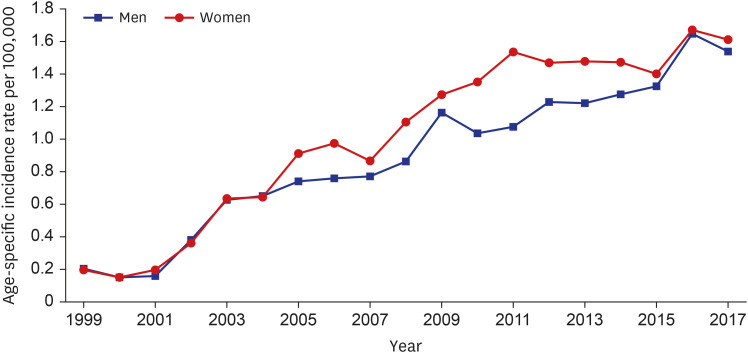
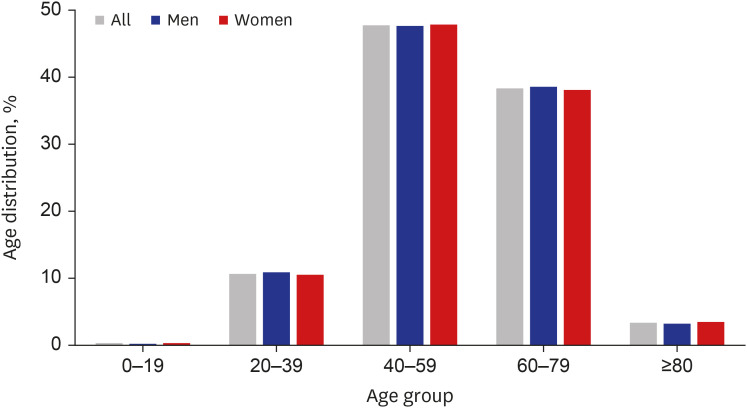
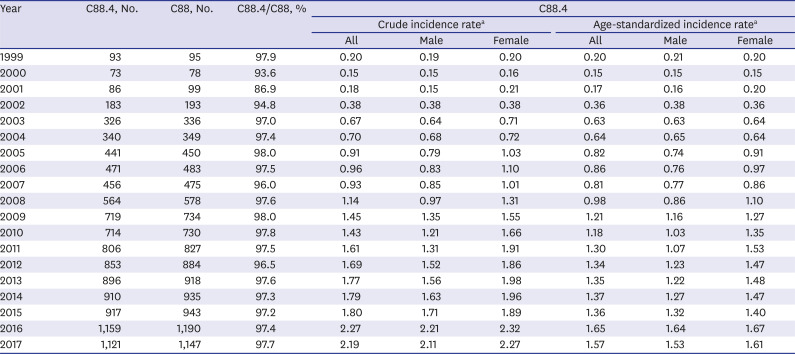
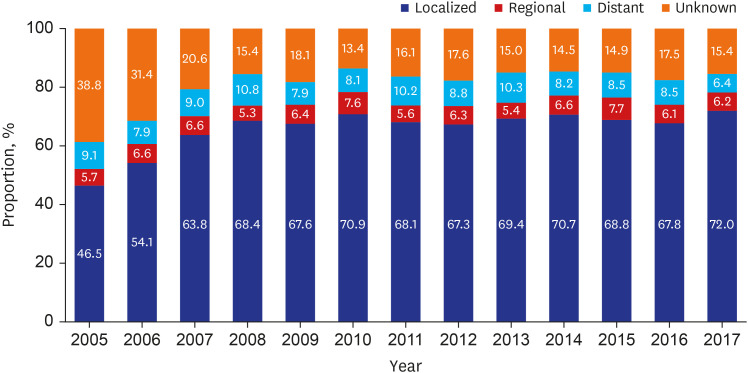

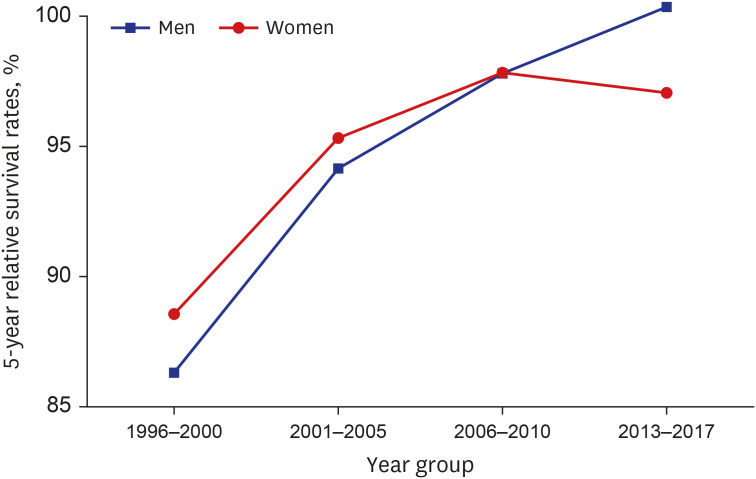
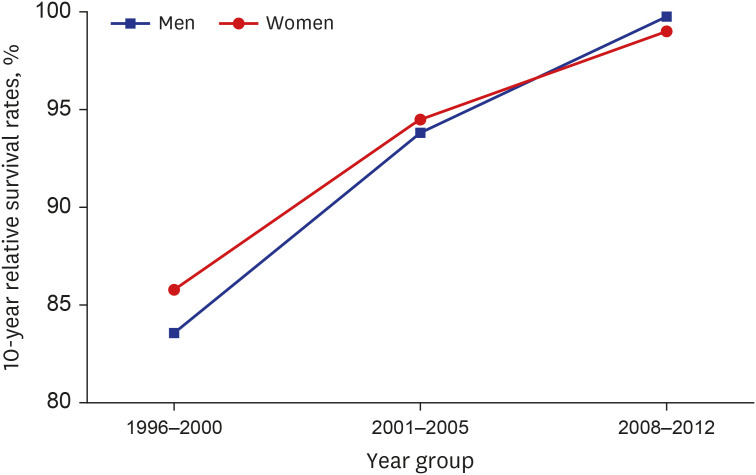





 PDF
PDF Citation
Citation Print
Print



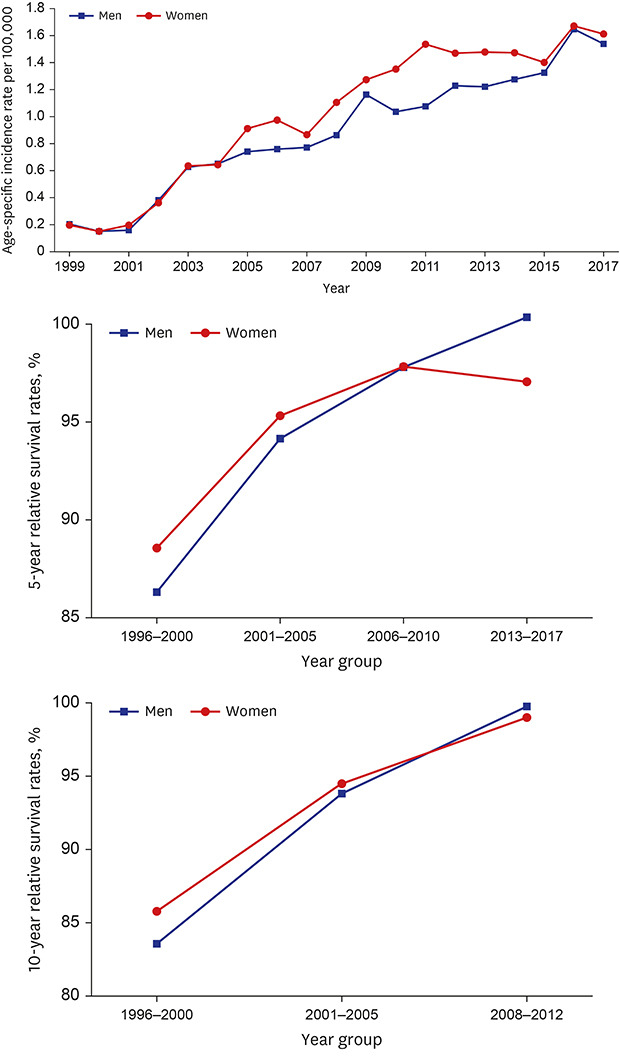
 XML Download
XML Download